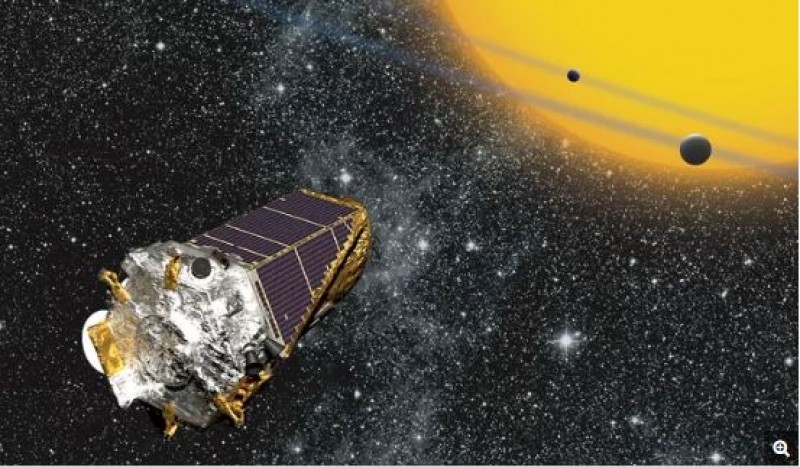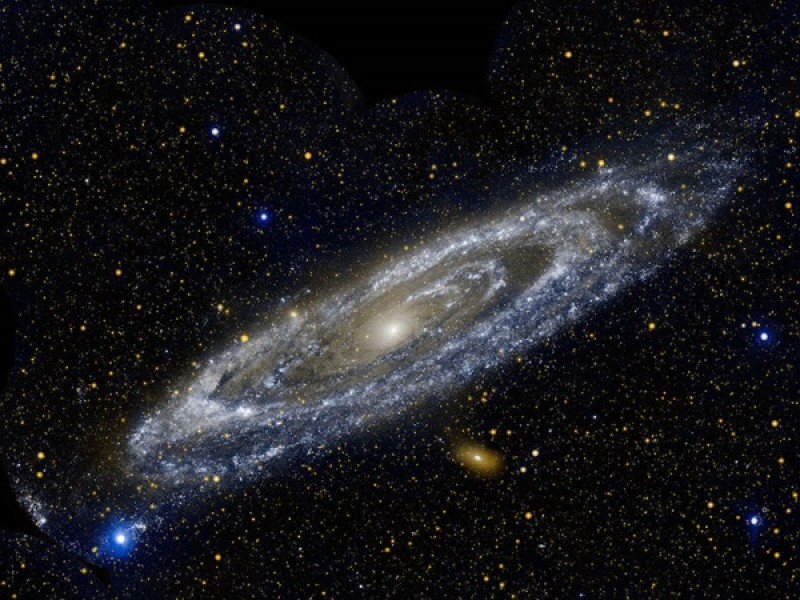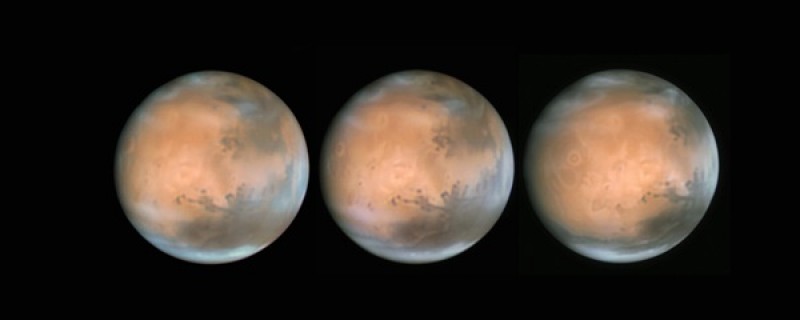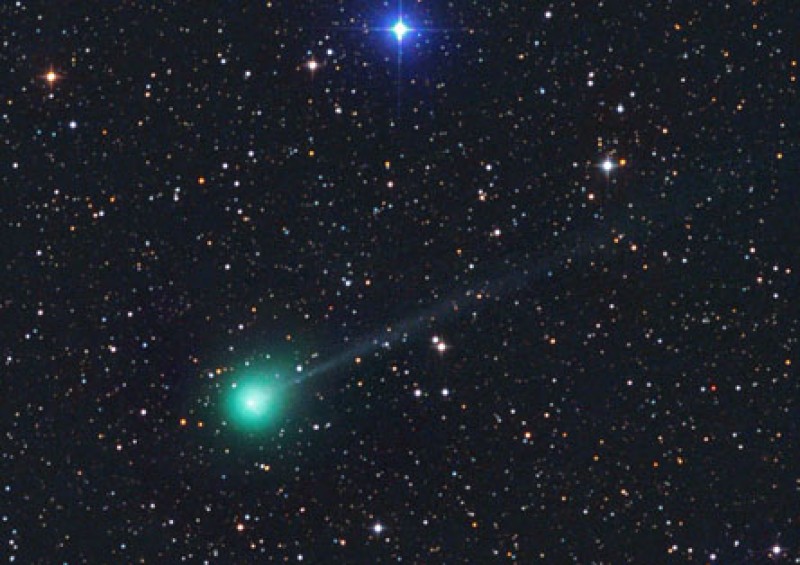News
NASA's Prolific Planet-Hunting Kepler Space Telescope Goes Back to Sleep
Saturday, August 25th 2018 07:52 PM
The most accomplished planet-hunting instrument of all time has shut its eagle-sharp eyes once again.
NASA's Kepler space telescope, which has discovered about 70 percent of all known alien worlds to date, is running very low on fuel. In early July, Kepler intentionally went into a hibernation-like state to ensure that the spacecraft would have enough propellant left to orient itself toward Earth and beam its latest data home four weeks later.
Such data-transmission opportunities occur in limited windows; Kepler and many other far-flung NASA spacecraft must take turns using the agency's Deep Space Network, a system of big radio dishes around the world.
The Kepler data did indeed come down to Earth as planned in early August. But Kepler has now gone back to sleep again, and the observatory's future is murky, mission team members wrote in an update today (Aug. 24).
"It is unclear how much fuel is still on board; NASA is looking into the health of the spacecraft and det...
Read More
Read More
Secrets Of The Strange Stars That Circle Our Supermassive Black Hole
Friday, July 27th 2018 04:14 PM
High winds are the norm at the center of the Milky Way. Astronomers have now clocked suns orbiting the galactic core at a staggering 3,000 miles (4,800 kilometers) per second. At this rate, Earth would complete its orbit around the sun in a mere three days. What lurks at the galaxy’s core that can accelerate stars to such speeds?Astronomers have considered various possibilities. Does the center of the galaxy harbor a tight cluster of superdense stellar remnants (neutron stars)? Or perhaps a huge ball of subatomic neutrino particles?But these and other more exotic possibilities were eliminated in the spring of 2002 when a star called S2 swept down in its highly eccentric orbit and passed within 17 light-hours of the Milky Way’s center — a minuscule distance in galactic terms. In 17 hours, light travels three times the distance between Pluto and the sun.Only one object is compact enough and has sufficient mass to accelerate stars to such a high speed: a supermassive...
Read More
Read More
Dust on Mars Likely Comes From Massive Volcanic Deposit
Thursday, July 26th 2018 05:14 PM
As luck would have it, Mars will remain engulfed in a colossal dust storm as it reaches opposition on July 27. The viewing conditions might be abysmal, but astronomers can at least take solace in a long-awaited Martian mystery being solved — where all of this dust is coming from.New research published in the journal Nature Communications revealed that the massive amounts of dust are tied to Mars’ Medusae Fossae Formation (MFF), the largest explosive volcanic ash deposit in the solar system. Researchers from Johns Hopkins University found that Martian winds are gradually eroding the volcanic remnants, which cemented in place billions of years ago. The winds transform them into the fine dust particles that take over the planet during global and seasonal storms.NASA’s Mariner Spacecraft first discovered the 1.25 million square mile (2 million square kilometer) formation in the 1960s, but its origins remained a mystery until recen...
Read More
Read More
Liquid Water on Mars! Really for Real This Time (Probably)
Wednesday, July 25th 2018 04:12 PM
Liquid water on Mars? Again? Yes, again. The announcement came at a press briefing held by the Italian Space Agency in Rome, concerning a paper published today in Science.
How is today's water-on-Mars hoopla different from all of the past announcements? In brief: the evidence is from a new instrument, examining a new location on Mars, and it's the first place we've seen evidence for a present-day body of water that is liquid and stays liquid. For years.
Probably.
The Mars Express orbiter has used radar signals bounced through underground layers of ice to find evidence of a pond of water buried below the south polar cap. Find more information on this image here.Context map: NASA / Viking; THEMIS background: NASA / JPL-Caltech / Arizona State Univ.; MARSIS data: ESA / NASA / JPL / ASI / Univ. Rome; R. Orosei et al 2018
The report comes from the European Space Agency's Mars Express, the second-oldest spacecraft still operating at Mars. It's best...
Read More
Read More
Andromeda may have eaten the Milky Way’s long-lost sibling
Tuesday, July 24th 2018 06:56 PM
The Andromeda Galaxy (M31) is the largest member of the Milky Way’s gang of galactic neighbors, known as the Local Group. With around a trillion suns worth of mass, Andromeda’s gravitational influence is a force to be reckoned with. And according to new research, no galaxy in the Local Group knows this better than M32, an oddball satellite galaxy now orbiting Andromeda. In a study published today in Nature Astronomy, researchers showed that about 2 billion years ago, the Andromeda Galaxy cannibalized one of the largest galaxies in the Local Group, turning it into the strange compact galaxy known as M32 that we see bound to Andromeda today. This massive collision stripped M32’s progenitor galaxy (dubbed M32p) of most of its mass – taking it from a hefty 25 billion solar masses to just a few billion solar masses. “Astronomers have been studying the Local Group — the Milky Way, Andromeda, and their companions — for so...
Read More
Read More
Get Outside And See Mars At Its Brightest
Monday, July 23rd 2018 06:17 PM
Planetary observing hits a high point this summer as Mars dominates the evening sky. Dust off your scope, because this is the year to observe the Red Planet. It hasn’t been this big and bright since 2003, and it won’t be again until September 2035.
So, excitement is building. For readers new to Red Planet mania, astronomers’ interest peaks during times called oppositions, when Mars lies opposite the Sun from our perspective on Earth. This year’s opposition occurs July 26 or 27, depending on where you live. Let me explain.
Although a bit farther and smaller than it appeared in 2003, Mars in 2018 will appear much larger than during its worst opposition, more than 800 years from now.
Astronomy: Roen Kelly
Dates and numbers
The moment of opposition occurs at 5h13m Universal Time on the 27th. In the United States, that’s 1:13 a.m. EDT. If you observe from the Mountain or Pacific time zones, the date of opposition will...
Read More
Read More
New detection method could quickly reveal exoplanets with Earth-like orbits
Friday, July 20th 2018 04:39 PM
Hunting for exoplanets is a complex yet exciting job that forefronts the search for habitability, but it’s definitely a time-consuming process. When an exoplanet candidate is detected, researchers have to observe it passing by its host star three times before they can officially confirm its existence. This isn’t a problem if the orbital period lasts a few days, weeks, or months, but it isn’t exactly effective if the planet takes years to transit its star. Luckily, a new method published in the journal Astronomy & Astrophysics allows astronomers to bypass the long wait period and verify the existence of some exoplanets after a single transit.
When a planet transits its host star, its luminosity temporarily decreases. By observing this decrease in luminosity three different times, researchers are able to confirm the transiting object's orbital pattern and estimate its radius — key factors in determining its planetary status. Th...
Read More
Read More
Telescope Upgrade Produces Stunningly Clear Views of Space
Wednesday, July 18th 2018 07:19 PM
Twinkle, twinkle, little star" is a twisted sort of lullaby for astronomers, because the effect that enchants the casual stargazer blurs images taken by even the most powerful telescopes.
Sometimes known as "astronomical seeing," the twinkling or blurring is caused by turbulence in Earth's atmosphere, which muddies a telescope's view. Astronomical seeing is why astronomers flock to mountains, which reach into the atmosphere, and why space telescopes are so valuable.
New photographs released by the European Southern Observatory show how severe the effect can be — and how a technology called adaptive optics can reduce the problem. To compare the different image-quality levels on offer, the photographs all focus on Neptune.
The images come courtesy of the observatory's Very Large Telescope in Chile, which sports a new, adaptive-optics module on one of its telescopes. Adaptive optics produce sharper images by compensating for interference from the atmosphere...
Read More
Read More
PanSTARRS Comet, Rocked by Outburst, Goes Green
Tuesday, July 17th 2018 04:38 PM
You gotta love comets. OK, except when they fizzle. But outside of that, they can be tremendous fun to watch. That's so true of Comet PanSTARRS (C/2017 S3), which is now undergoing a second outburst just two weeks after its first. This latest explosion has pumped enough life into the vagabond to see it in a pair of binoculars. No kidding. I spotted with ease in my 10×50s on July 16.20 UT. Nothing fancy, just a small blob, but at magnitude ~8.2 it was obvious.
With a Frankensteinian jolt, C/2017 S3 first came to life on or about June 30th, sitting straight up at magnitude 9.5 after a three magnitude outburst. The explosion released a significant amount of C2 or diatomic carbon gas, which gives comet comas their characteristic aqua-green hue. Swan Band filters capitalize on this fact by transmitting only a few narrow slivers of light, including C2emissions, to provide clearer and contrastier views of "gassy" comets.
Days later, C/2017 S3's cor...
Read More
Read More
Observers Anxious for Dust to Settle as Mars Opposition Approaches
Friday, July 13th 2018 04:33 PM
Mars and its serene reflection off Lake Superior on July 9 belie the turmoil astir in its atmosphere.Bob King
Mars rises brilliant and inviting these July nights, but the view through a telescope reveals little more than a blurry, orange ball devoid of surface features. Many of us knew in advance we'd have to put up with poor seeing because of the planet's southerly declination. We also knew of the possibility of dust storms. But few expected such amassive, planet-girdling storm to occur this early in the most favorable apparition of the Red Planet since 2003.
Roger Venable, coordinator of the Association of Lunar and Planetary Observers (ALPO) Mars Section, describes the current storm as "unique in the history of observed Martian dust storms."
Though sometimes compared to the 2001 global storm, that event occurred closer to the start of Martian summer and in a more traditional location, the familiar tempest-breeding grounds of Hellas Basin in Mars'...
Read More
Read More









